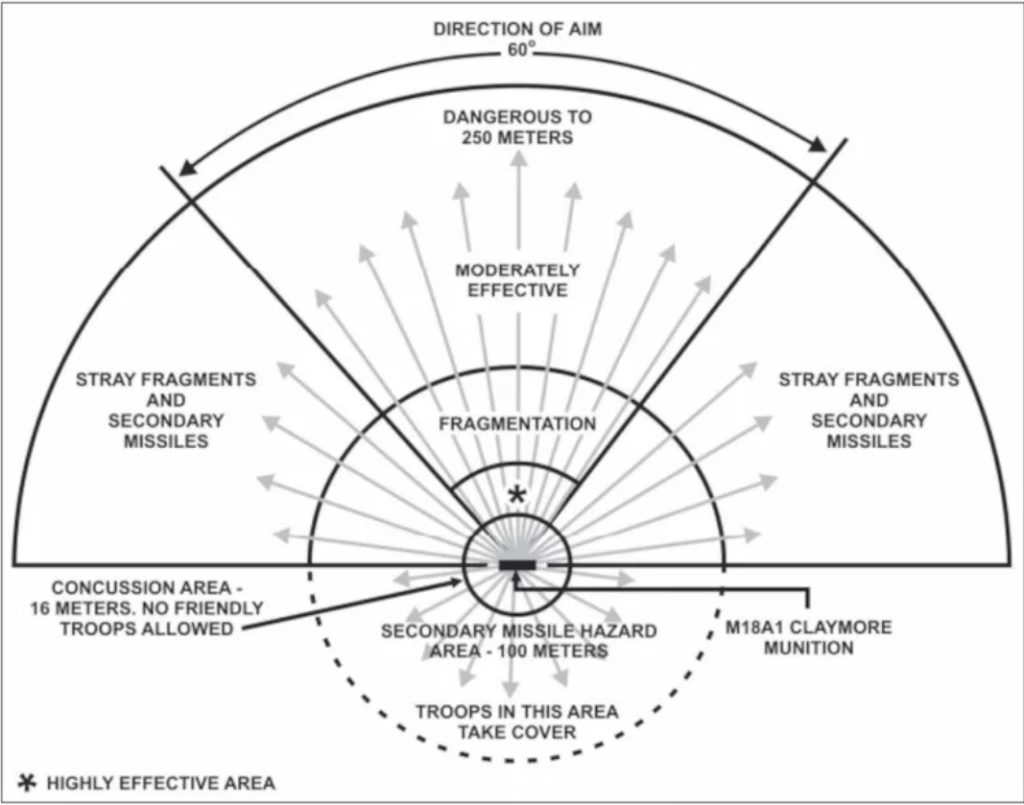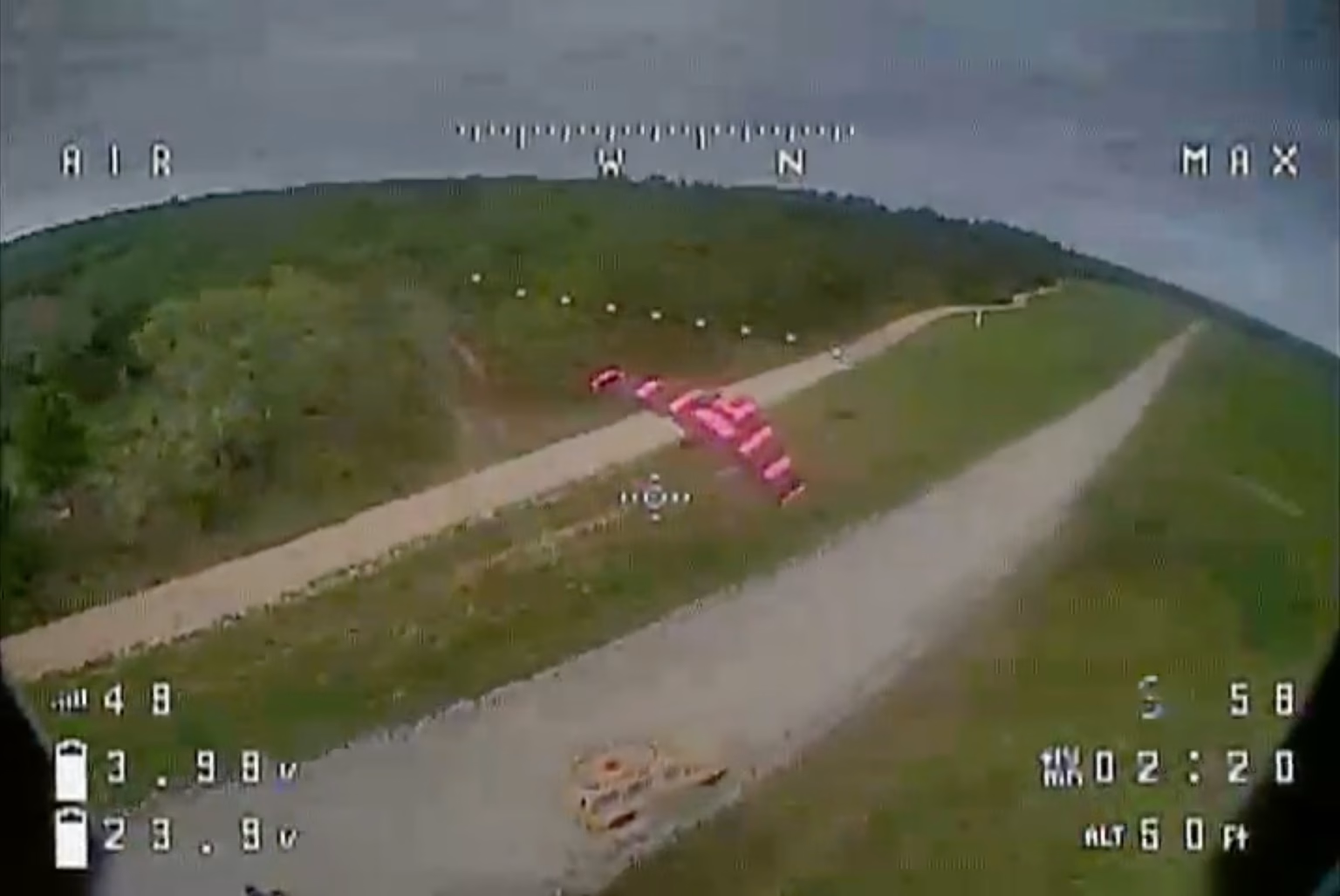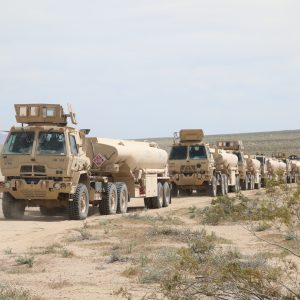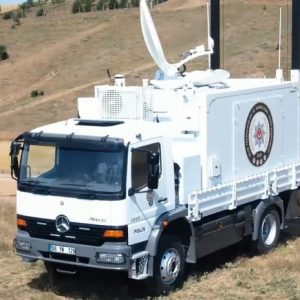The U.S. Army recently tested a small quadcopter armed with a Claymore mine. The drone intercepted and destroyed another uncrewed aerial system at Fort Rucker, Alabama. The exercise involved the 173rd Airborne Brigade Combat Team, the Pennsylvania Army National Guard, and DEVCOM Armaments Center under Project Shank.
This project aims to equip frontline units with weaponized drones, addressing gaps in the Army’s counter-UAS toolkit. The test reflects a move toward faster development cycles and operational deployment.
Claymore as an Airborne Weapon
The M18 Claymore mine, first introduced in the late 1950s, remains one of the most recognizable directional anti-personnel munitions in service. Shaped like a curved rectangular box, it contains C-4 explosive and approximately 700 precision-steel ball bearings embedded in a resin matrix. When detonated, these projectiles spread in a 60-degree arc out to an effective range of around 250 meters, creating a lethal zone capable of neutralizing multiple targets at once.
When mounted on a small quadcopter, the Claymore transforms from a static defensive weapon into a mobile, precision strike platform. This adaptation allows the operator to reposition the munition in real time, bypassing the traditional limitations of fixed emplacement. In the Fort Rucker test, the drone pilot maneuvered to within optimal detonation distance and then manually triggered the blast, ensuring maximum hit probability.
This configuration offers several tactical advantages. The wide blast pattern compensates for aiming errors and target evasiveness, which is particularly valuable against small, high-speed unmanned aerial vehicles. Moreover, the airframe’s mobility allows for attacks from unconventional angles, including from above or behind—approaches that can defeat forward-facing sensors or frontal armor plating.
In combat zones such as Ukraine, both sides employ increasingly sophisticated countermeasures, including rear-facing cameras, electronic warfare interference, and collision-avoidance software. These systems complicate direct drone interceptions. A Claymore’s explosive cone, however, can saturate a target’s defensive envelope, overwhelming both automated evasion algorithms and manual pilot reactions. As drone-on-drone engagements evolve, integrating directional blast munitions into aerial intercept platforms could prove a decisive countermeasure in the low-altitude battlespace.
Applications Beyond Aerial Combat
Claymore-armed drones are not limited to aerial interception roles. They can also engage a variety of ground targets, from exposed personnel to lightly armored vehicles and even fortified defensive positions. By approaching from above, the drone can exploit blind spots in traditional defenses, bypassing sandbag walls, vehicle plating, and rooftop shields.
This vertical strike capability is particularly valuable in urban warfare, where enemies may hide behind barricades, inside buildings, or within narrow alleyways. A Claymore-equipped drone can hover over a target area, identify the most vulnerable angle, and deliver a precision detonation that sends lethal fragments downward or into confined spaces.
The approach is equally effective against entrenched troops in trench systems or temporary field fortifications. In such scenarios, a top-down blast can disrupt defensive lines, create openings for advancing forces, and neutralize positions without requiring heavy artillery. Additionally, the drone’s mobility allows it to conduct quick “strike and relocate” missions, reducing exposure to counter-fire or jamming attempts.

In future conflicts, this ability to conduct localized, high-impact strikes could make Claymore-armed drones a preferred tool for special operations units, rapid-reaction teams, and forward-deployed infantry tasked with neutralizing threats in complex terrain.
Global Context and US Modernization
Although the test is promising, it highlights U.S. delays in adopting lethal small drones. Forces in Ukraine and other hotspots have been using similar systems for years. Last month, the Army faced criticism for showcasing grenade-dropping drones—a method already common in active warzones.
In July 2025, the Pentagon unveiled its “Unleashing U.S. Military Drone Dominance” initiative—a sweeping policy package designed to accelerate the adoption of combat-ready uncrewed systems. The program’s primary goals are to shorten procurement timelines, eliminate excessive bureaucratic steps, and ensure that smaller frontline units gain direct access to advanced drone platforms without years of delay.
The initiative reflects a growing recognition within the Department of Defense that the pace of global drone innovation has outstripped traditional U.S. acquisition cycles. In active warzones like Ukraine, drones have become the dominant cause of battlefield casualties, and adversaries are producing them in massive quantities. The Pentagon intends to counter this imbalance by streamlining approvals, prioritizing rapid prototyping, and deploying proven systems directly to combat units.
“Drones are the biggest battlefield innovation in a generation… U.S. units are not outfitted with the lethal small drones the modern battlefield requires,” wrote Secretary of Defense Pete Hegseth in a memorandum announcing the initiative. He emphasized that while global drone production has surged, U.S. forces remain constrained by outdated procedures.
Hegseth also warned against “risk-avoidance” mindsets, stating that overly cautious approaches undermine combat readiness. His directive made it clear that the Pentagon’s bureaucratic gloves are coming off, signaling a shift toward a more agile and combat-focused acquisition culture aimed at matching, and ultimately surpassing, the pace of foreign drone development.
Strategic Takeaways
Integrating Claymore mines with quadcopters adds a flexible, localized air defense layer. These drones can complement existing tools like Coyote interceptors and adapt to varied battlefield conditions. The approach could also support allied interoperability in future joint operations.
For the U.S. Army, the challenge is clear—move beyond testing and into rapid fielding. In modern drone warfare, speed of adoption can be as critical as the technology itself.
Internal Link: Global Drone Warfare Trends 2025
External Link: U.S. Army Official Site











